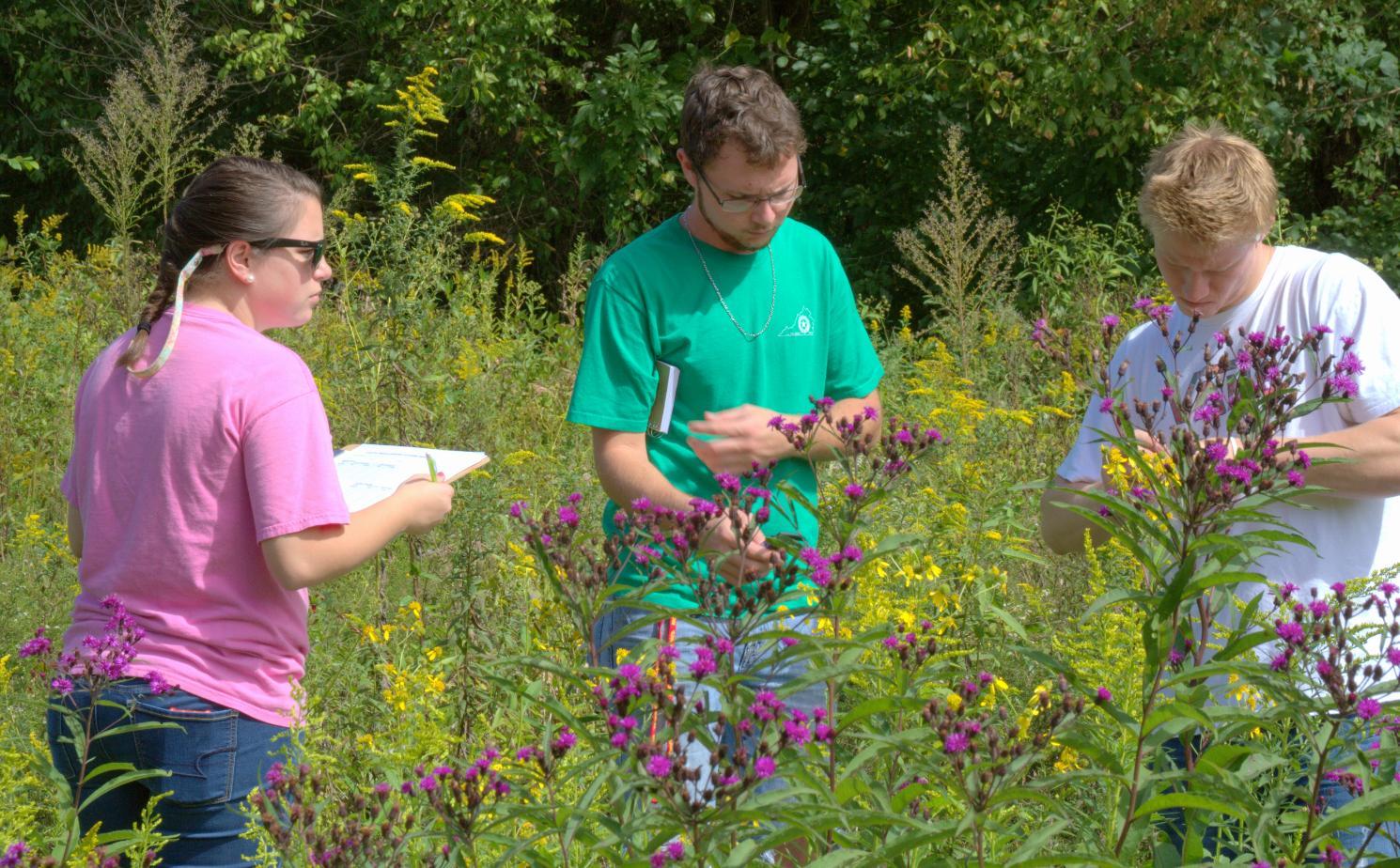You don’t always need to be a botanist or zoologist to contribute to science. Thanks to Longwood University’s Department of Biological and Environmental Sciences participation in BioBlitz, anyone can play the role of scientific observer.
The event, set for Saturday, April 1, from 9 a.m. to noon, is open to anyone.
Last year, Longwood’s Lancer Park was one of 12 sites that was “under the microscope” during the Virginia BioBlitz 2016. “We had a team of over 140 volunteers who worked together to find and identify as many species of plants, animals, fungi and other organisms as possible in one day,” said Dr. Sujan Henkanaththegedara, assistant professor of biology. “Our efforts yielded over 200 species, much more than I had anticipated given Lancer Park’s proximity to town.”
The Virginia BioBlitz, sponsored principally by the Virginia Geographic Alliance, which is housed within the Department of Biological and Environmental Sciences, seeks to demonstrate the importance of conservation and exploration, highlight the biodiversity of an area and generate data that can be used by scientists and citizen scientists.
“While data obtained from these events can be useful,” said Dr. Edward Kinman, professor of geography, “I like how a BioBlitz promotes observation. As we learn how to see, we begin a journey to try and make sense of those observations. I hope this event promotes a sense of wonder in participants to better understand the intricate and interconnected systems of the world around us.”
I hope this event promotes a sense of wonder in participants to better understand the intricate and interconnected systems of the world around us.
Dr. Edward Kinman, professor of geography
The Environmental Educational Center at Lancer Park will be “BioBlitz central.” At touch tables, people can handle local plants, and materials for teachers will be available. “If you want to catch some salamanders and hold them in your hands, show up. This is going to be fun,” said Henkanaththegedara. "This is a family event and a community event."
Participants are encouraged to download the iNaturalist app [available for free on Google Play for Android and the Appstore for Mac] to their phones or tablets before arrival. The app will be used to record observations after participants are assigned to various specialty groups led by faculty members and majors from the Department of Biological and Environmental Sciences. They will work in the area behind the Environmental Education Center, which includes wooded areas, grassy meadows and several ponds, with access to Buffalo Creek and the Appomattox River.
“This is an excellent example of what I call becoming citizen scientists,” said Henkanaththegedara. “When you’re out in the field, it’s easier to see connections in the natural world. Plus, students in my ichthyology [study of fish] and general ecology classes have documented biodiversity, and they are more motivated when they use data they have collected. It gives them a sense of ownership of the data."
For more information, including a map to Lancer Park, visit the Longwood Bioblitz @ Lancer Park website at: https://blogs.longwood.edu/longwoodbioblitz/game-plan/.



Leave a Comment